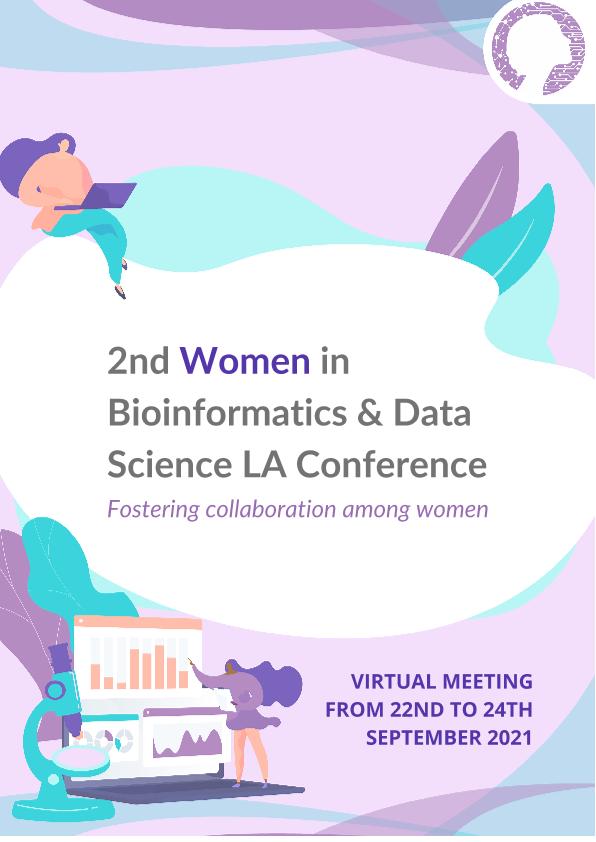Mostrar el registro sencillo del ítem
dc.contributor.author
Bogado, María Lucrecia

dc.contributor.author
Villafañe, Roxana Noelia

dc.contributor.author
Angelina, Emilio Luis

dc.contributor.author
Peruchena, Nelida Maria

dc.date.available
2022-10-05T15:46:11Z
dc.date.issued
2021
dc.identifier.citation
Targeting Protein Pockets with Halogen Bonds; 2nd Women in Bioinformatics & Data Science LA Conference; Buenos Aires; Argentina; 2021; 119-119
dc.identifier.uri
http://hdl.handle.net/11336/171977
dc.description.abstract
Halogen bonds (X-bonds) are directional interactions involving an attractive force between an electrophilic region on the halogen and interaction partners with nucleophilic properties, X-bond has gained recognition as an atypical molecular interaction useful in modeling halogens computationally to develop new pharmaceutical drugs. X-bonds in protein-ligand complexes are surrounded by residues that conforms the “X-bond environment”. Since sigma-hole formation in X-bonds is a consequence of the anisotropy of the charge density distribution around the halogen, protein residues that surround halogen atom might perturb its charge distribution and X-bond strength. In this work we proposed a protocol to study the feasibility of protein pockets to form X-bond with halogenated ligands, based on the environment. First, a structural survey of X-bonded protein-ligand complexes in public databases was performed to get a description of the “X- bond environment” based on the charge density, with help of the Quantum Theory of Atoms in Molecules (QTAIM). In the second step, the “X-bond environment” is used as a reference system to judge the propensity of protein pockets to host an X-bond. To test the protocol, we generated poses in which chlorobenzene is forming: (a) the known X-bond and (b) a different X-bond in a nearby protein sub-pocket with no structural evidence about its existence. We termed this last as “decoy X-bond”. Fifty poses were generated with the docking algorithm for both known and decoys X-bonds. Charge density-based X-bond environments for the docking poses were estimated by mapping the chloro protein neighborhood, into the X-bond environment pre-computed on the reference system. The protocol was able to prioritize docking poses that reproduce the actual X-bond in crystal structures based on their X-bond environments, since "real X-bonds" have stronger X-bond environments that decoy X-bonds, as expected. The results suggest that X-bond formation might require a proper protein environment to be established.
dc.format
text/plain
dc.language.iso
eng
dc.publisher
Women in Bioinformatics & Data Science
dc.rights
info:eu-repo/semantics/openAccess
dc.rights.uri
https://creativecommons.org/licenses/by-nc-sa/2.5/ar/
dc.subject
HALOGEN-BOND
dc.subject
DRUG-DESIGN
dc.subject
X-BOND
dc.subject
QTAIM
dc.subject.classification
Otras Ciencias Biológicas

dc.subject.classification
Ciencias Biológicas

dc.subject.classification
CIENCIAS NATURALES Y EXACTAS

dc.title
Targeting Protein Pockets with Halogen Bonds
dc.type
info:eu-repo/semantics/publishedVersion
dc.type
info:eu-repo/semantics/conferenceObject
dc.type
info:ar-repo/semantics/documento de conferencia
dc.date.updated
2022-09-22T11:50:09Z
dc.journal.pagination
119-119
dc.journal.pais
Argentina

dc.journal.ciudad
Buenos Aires
dc.description.fil
Fil: Bogado, María Lucrecia. Consejo Nacional de Investigaciones Científicas y Técnicas. Centro Científico Tecnológico Conicet - Nordeste. Instituto de Química Básica y Aplicada del Nordeste Argentino. Universidad Nacional del Nordeste. Facultad de Ciencias Exactas Naturales y Agrimensura. Instituto de Química Básica y Aplicada del Nordeste Argentino; Argentina
dc.description.fil
Fil: Villafañe, Roxana Noelia. Consejo Nacional de Investigaciones Científicas y Técnicas. Centro Científico Tecnológico Conicet - Nordeste. Instituto de Química Básica y Aplicada del Nordeste Argentino. Universidad Nacional del Nordeste. Facultad de Ciencias Exactas Naturales y Agrimensura. Instituto de Química Básica y Aplicada del Nordeste Argentino; Argentina
dc.description.fil
Fil: Angelina, Emilio Luis. Consejo Nacional de Investigaciones Científicas y Técnicas. Centro Científico Tecnológico Conicet - Nordeste. Instituto de Química Básica y Aplicada del Nordeste Argentino. Universidad Nacional del Nordeste. Facultad de Ciencias Exactas Naturales y Agrimensura. Instituto de Química Básica y Aplicada del Nordeste Argentino; Argentina
dc.description.fil
Fil: Peruchena, Nelida Maria. Consejo Nacional de Investigaciones Científicas y Técnicas. Centro Científico Tecnológico Conicet - Nordeste. Instituto de Química Básica y Aplicada del Nordeste Argentino. Universidad Nacional del Nordeste. Facultad de Ciencias Exactas Naturales y Agrimensura. Instituto de Química Básica y Aplicada del Nordeste Argentino; Argentina
dc.relation.alternativeid
info:eu-repo/semantics/altIdentifier/url/https://wbds.la/conferences/2WBDSLAC/index.html
dc.conicet.rol
Autor

dc.conicet.rol
Autor

dc.conicet.rol
Autor

dc.conicet.rol
Autor

dc.coverage
Internacional
dc.type.subtype
Conferencia
dc.description.nombreEvento
2nd Women in Bioinformatics & Data Science LA Conference
dc.date.evento
2021-09-22
dc.description.ciudadEvento
Buenos Aires
dc.description.paisEvento
Argentina

dc.type.publicacion
Book
dc.description.institucionOrganizadora
Women in Bioinformatics & Data Science
dc.source.libro
2nd Women in Bioinformatics & Data Science LA Conference: Fostering collaboration among women
dc.source.revista
Women in Bioinformatics & Data Science LA Conference
dc.date.eventoHasta
2021-09-24
dc.type
Conferencia
Archivos asociados
